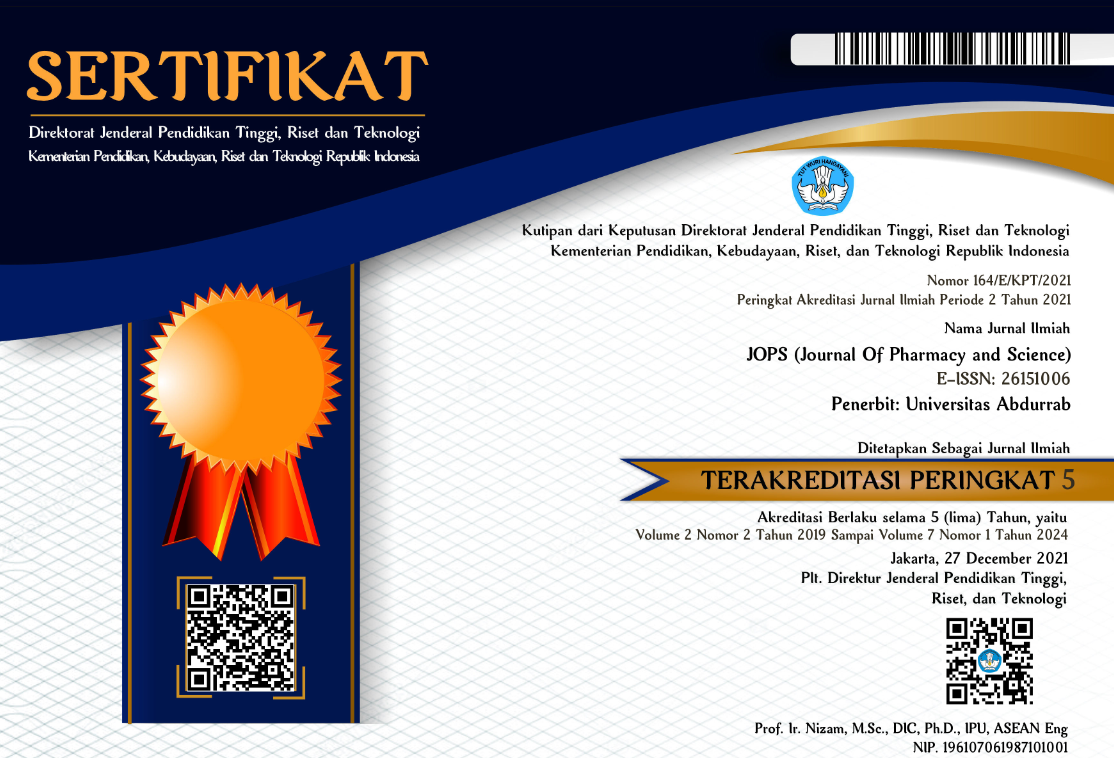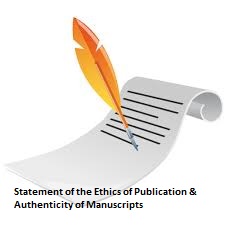Activity Antibacterial Assay of Coffee Mistletoe Leaves (Loranthus Ferrugineus Roxb) Ethanol Extract is Against Bacteria Staphylococcus aureus and Escherichia coli
UJI AKTIVITAS ANTIBAKTERI EKSTRAK ETANOL DAUN BENALU KOPI (Loranthus ferrugineus Roxb) TERHADAP BAKTERI Staphylococus aureus dan Escherichia coli
Abstract
Coffee mistletoe (Loranthus ferrugineus Roxb) is a plant that has been researched globally and contains metabolite compounds such as flavonoids, tannins, saponins, and alkaloids, which have been extensively researched to have natural antimicrobial and antioxidant effects. For centuries, mistletoe has been widely used in traditional medicine as an anti-cancer agent for diarrhea and other infectious diseases. The study's goals are to find out what kind of metabolite compounds are in the ethanol extract of mistletoe coffee leaves and how well that extract kills Staphylococcus aureus and Escherichia coli bacteria. This research method is experimental, which includes collecting plant material, identifying plants, processing samples of coffee mistletoe into an ethanol extract of coffee mistletoe with a 96% ethanol solvent, and then testing phytochemical screening against coffee mistletoe simplisa. Antibacterial activity of an ethanol extract of coffee mistletoe against Staphylococcus aureus and Escherichia coli bacteria using the well diffusion test method. The ethanol extract of coffee mistletoe provides phytochemical screening results, including phenyl, terpenoids, and alkaloids. From the test results, it can be seen that the ethanol extract of coffee mistletoe can kill bacteria with the inhibitory power value of the extract on Staphylococcus aureus and Escherichia coli bacteria, with a minimum inhibitory power of 7.5 mm at a concentration of 3.125 mg/ml against Staphylococcus aureus and 8.9 mm at a concentration of 3.125 mg/ml against Escherichia coli bacteria. Judging from the inhibitory zone value, it is in the weak category for the lowest concentration in inhibiting the growth of Staphylococcus aureus and Escherichia coli bacteria.
Copyright (c) 2023 JOPS (Journal Of Pharmacy and Science)

This work is licensed under a Creative Commons Attribution-NonCommercial-ShareAlike 4.0 International License.
1. Copyright of all journal manuscripts is held by the JOPS (Journal Of Pharmacy and Science)
2. Formal legal provisions to access digital articles of electronic journal are subject to the provision of the Creative Commons Attribution-ShareAlike license (CC BY-NC-SA), which means that JOPS (Journal Of Pharmacy and Science) is rightful to keep, transfer media/format, manage in the form of databases, maintain, and publish articles.
3. Published manuscripts both printed and electronic are open access for educational, research, and library purposes. Additiponally, the editorial board is not responsible for any violations of copyright law.
licensed under a Creative Commons Attribution-ShareAlike 4.0 International License.
 PDF
PDF
 Abstract views: 59
Abstract views: 59
 downloads: 50
downloads: 50

1.png)








